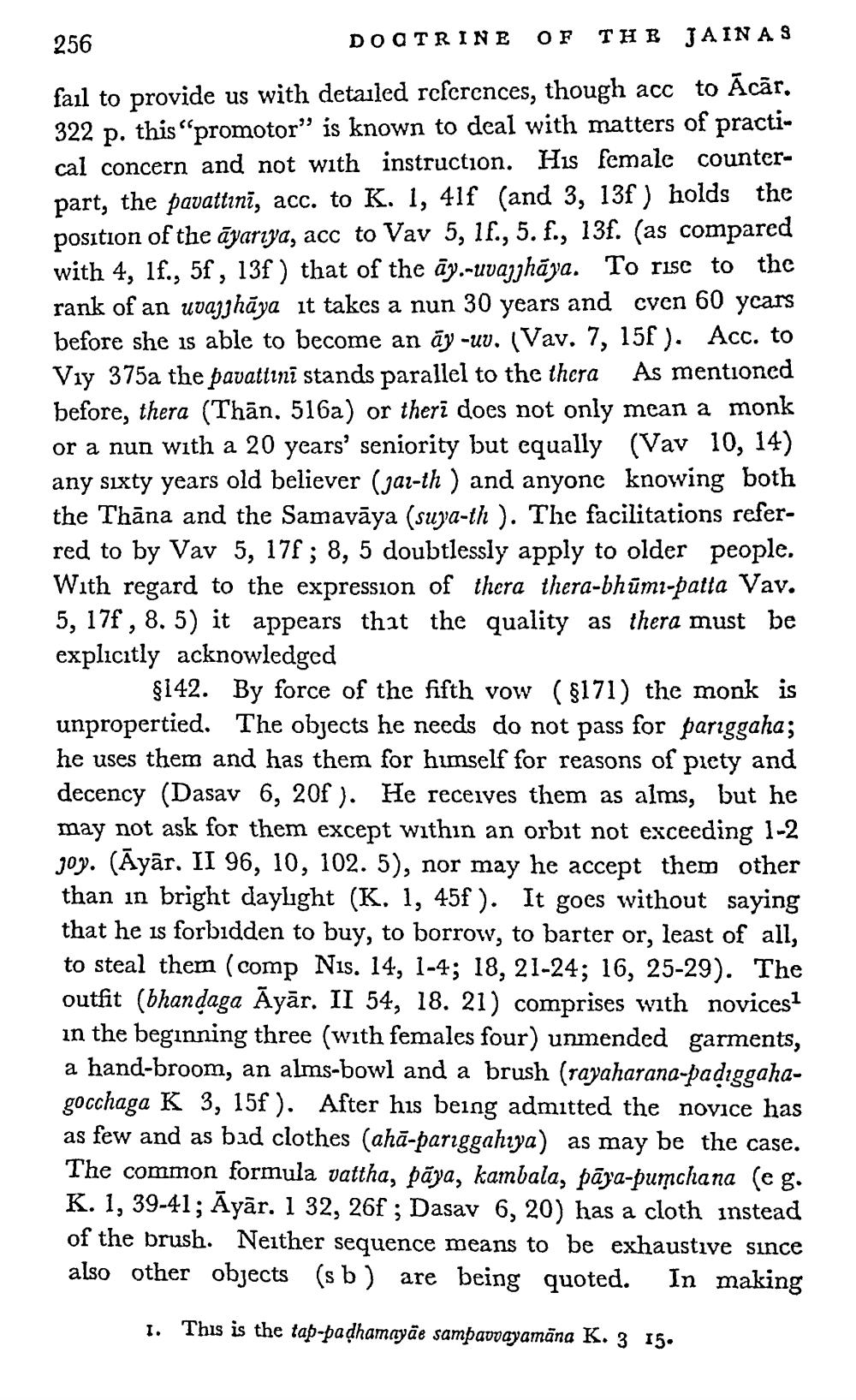________________
256
DOCTRINE OF THB JAIN AS fail to provide us with detailed references, though acc to Ācār. 322 p. this"promotor" is known to deal with matters of practical concern and not with instruction. His female counterpart, the pavattınī, acc. to K. 1, 41f (and 3, 13f) holds the position of the āyarıya, acc to Vav 5, 1f., 5.f., 13f. (as compared with 4, 1f., 5f , 13f) that of the āy.-uvajghāya. To rise to the rank of an uvajjhāya it takes a nun 30 years and cven 60 ycars before she is able to become an āy-uv. (Vav. 7, 15f). Acc. to Viy 375a the pavattınī stands parallel to the thera As mentioned before, thera (Thān. 516a) or therī does not only mean a monk or a nun with a 20 years seniority but equally (Vav 10, 14) any sixty years old believer (jar-th ) and anyone knowing both the Thāna and the Samayāya (suya-th ). The facilitations referred to by Vav 5, 178; 8, 5 doubtlessly apply to older people. With regard to the expression of thera thera-bhūmi-patta Vav. 5, 17f, 8. 5) it appears that the quality as thera must be explicitly acknowledged
$142. By force of the fifth vow ($171) the monk is unpropertied. The objects he needs do not pass for parrggaha; he uses them and has them for himself for reasons of piety and decency (Dasav 6, 20f). He receives them as alms, but he may not ask for them except within an orbit not exceeding 1-2 joy. (Āyār. II 96, 10, 102. 5), nor may he accept them other than in bright daylight (K, 1, 45f). It goes without saying that he is forbidden to buy, to borrow, to barter or, least of all, to steal them (comp Nis. 14, 1-4; 18, 21-24; 16, 25-29). The outfit (bhandaga Āyār. II 54, 18. 21) comprises with novices? in the beginning three (with females four) unmended garments, a hand-broom, an alms-bowl and a brush (rayaharana-padıggahagocchaga K 3, 15f). After his being admitted the novice has as few and as bad clothes (ahā-pariggahıya) as may be the case. The common formula vattha, pāya, kambala, pāya-pumchana (e g. K. 1, 39-41; Āyār. 1 32, 26f; Dasav 6, 20) has a cloth instead of the brush. Neither sequence means to be exhaustive since also other objects (s b) are being quoted. In making
1.
This is the tab-badhamayāe sambadvayamana K. 3 15.




